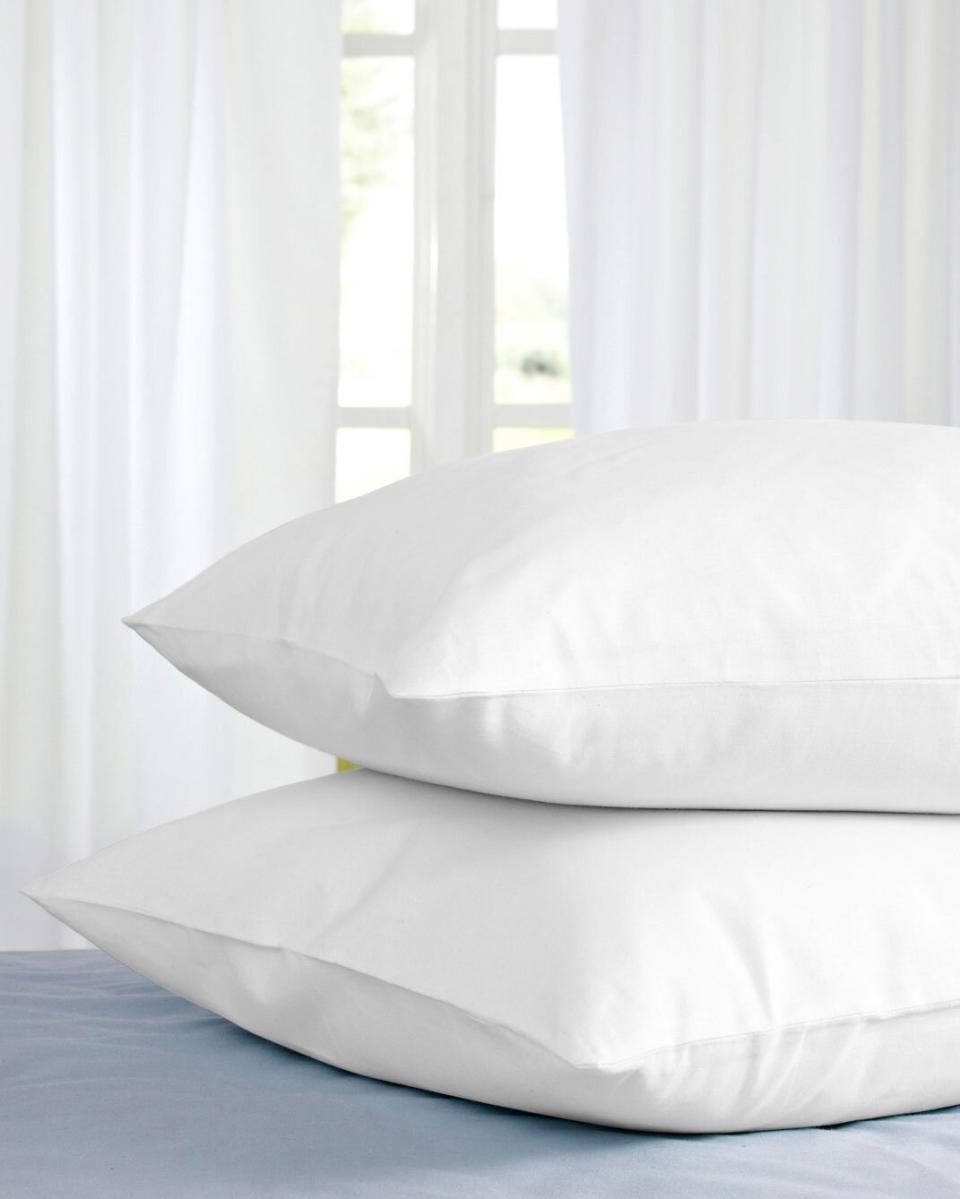Down or Down Alternative Bedding: Which Is Best for You?
It's just about time to refresh your bedding; the crisp days of fall are, believe it or not, right around the corner, which means that you might be in the market for a few new essentials, from comforters to pillows. One of the biggest choices you'll have to make when shopping is whether to select down or down alternative items. Ahead, you'll find tips for choosing the medium that works best with your allergies, sleep style, and laundry habits.
Related: The Best Tips for Perfect Laundry
Down Versus Down Alternative
"The trick to down and down alternative is understanding what they are made of," says Patric Richardson of The Laundry Evangelist. "Down is a natural fiber sewn inside a (usually) cotton covering; down alternative is a man-made fiber inside a (usually) cotton covering." The natural materials inside a down pillow are soft clusters of fluff from ducks, geese, or swans; this cotton ball-like material is found on the bird's chest (and shouldn't be confused with the quilled feathers used to make feather pillows and comforters). Down alternative bedding is stuffed with material that feels similar to down, but is made from cotton or polyester; since these materials aren't sourced from animals and are often hypoallergenic, they can be a better option for customers with allergies to dust or dander.

Major Differences
When choosing between a down or down alternative comforter, temperature is a key consideration. Down is lighter, more breathable, and a better insulator, so you can source a warmer comforter that isn't as dense; down alternatives require more filling, or loft, to provide the same amount of warmth (but they're also often less expensive). If you're buying a comforter and duvet separately, the warmth can also depend on the type of duvet you use. "As far as warmth, I buy a light one and change the duvet cover for the season," says Richardson. "Soft, cool, cotton percale for summer, and cozy flannel for the winter." The filling in down and down alternative pillows may feel different—since down is lighter, down pillows are often more plush, while the filling in a down alternative isn't as pliable—but both are available in pillows of various firmness designed for different sleeping positions.
Care Tips
For both down or down alternative comforters, Richardson suggests using a front-loading washer. "The pro to down is that it is easy to toss in with a tiny bit of soap or down wash—never detergent, which can coat the fibers," he says. "You will need to pretreat stains on the comforter with an oily soap and a brush." There are benefits to the man-made option, though. "Down alternatives does have a major perk—because there are not proteins involved, you can put oxygen bleach in the washer, removing all those sweat and oil stains from your husband or the dog." Pillows should be washed using the same technique, though Richardson recommends taking those to a laundromat with a commercial-sized machine that can spin them more efficiently. After washing, dry down bedding in the dryer with two or three tennis balls to re-fluff it. "Down alternatives cannot be in a hot dryer, so they require an air fluff cycle with tennis balls," says Richardson. "It can take significantly longer to dry. Finally, after all is washed and done, my last tip is to curl up in your cozy fresh comforter—a reward for a job well done."

